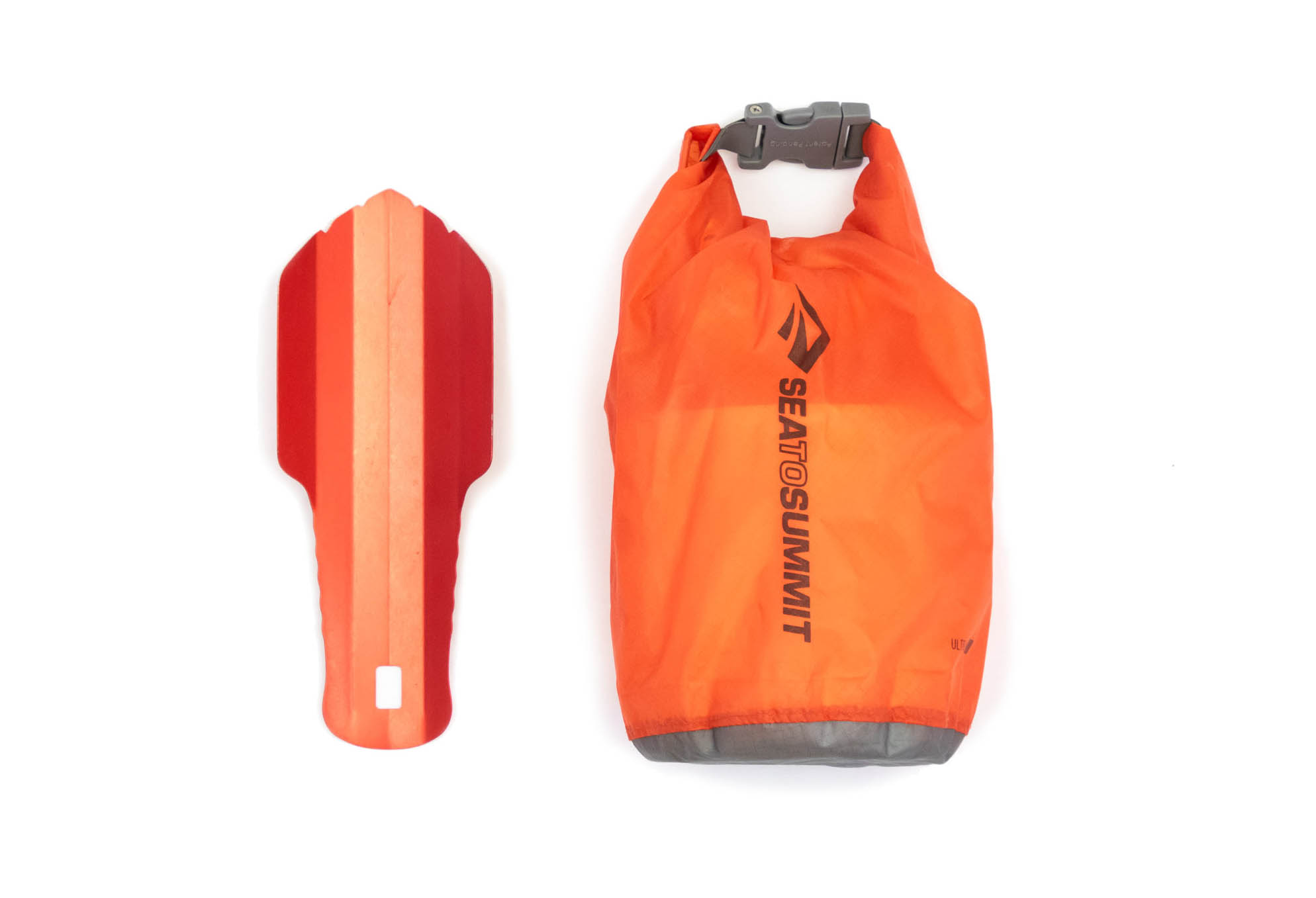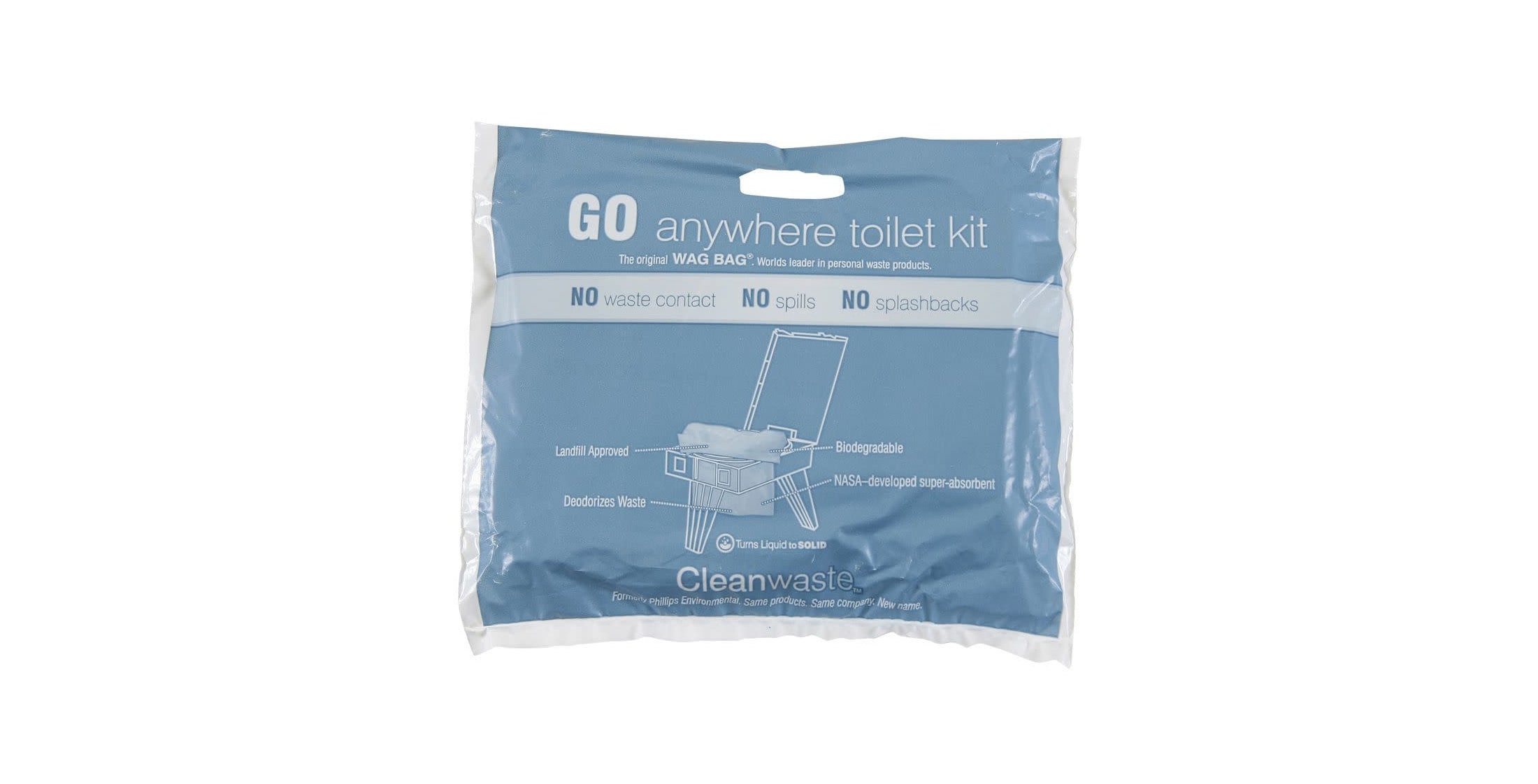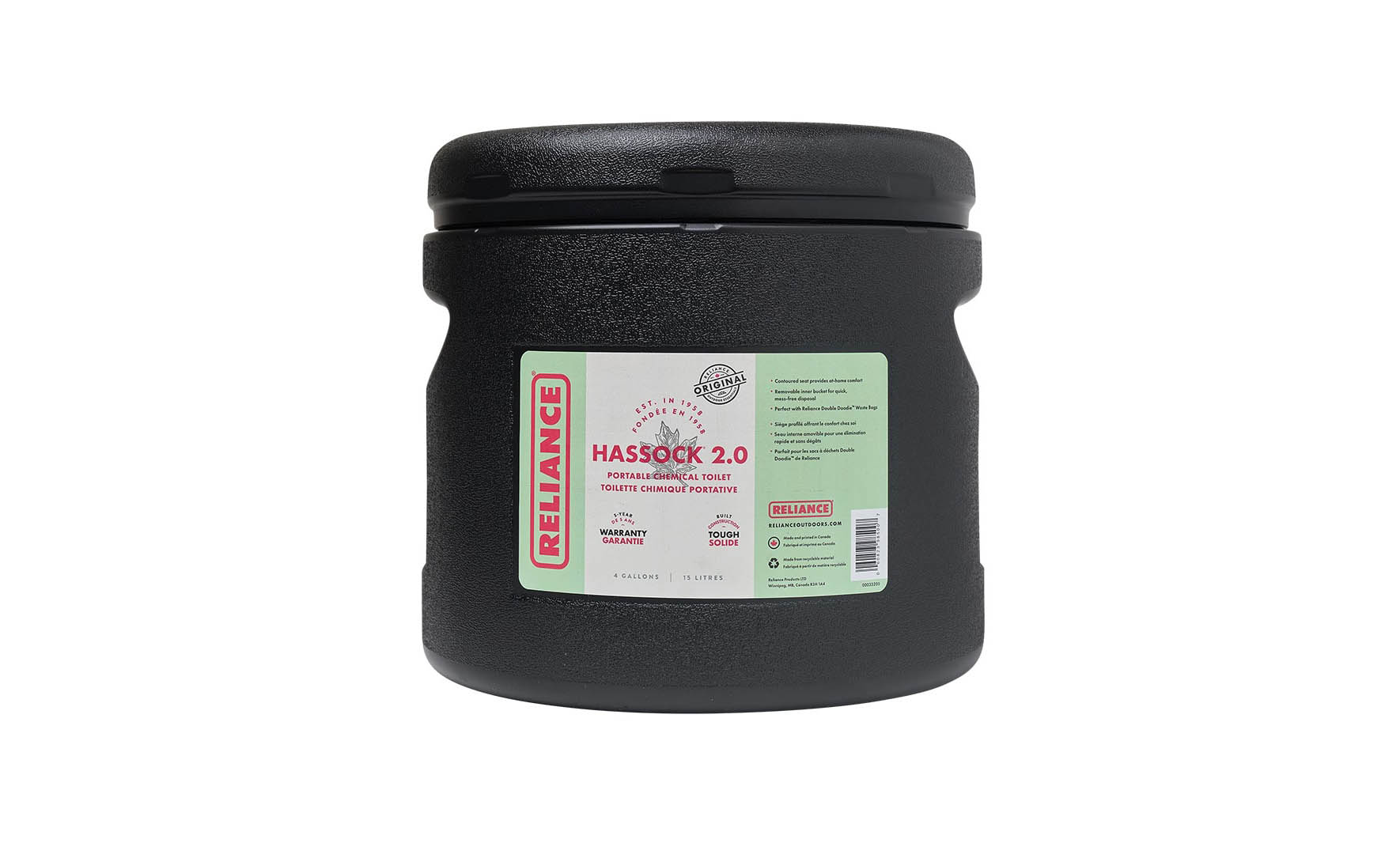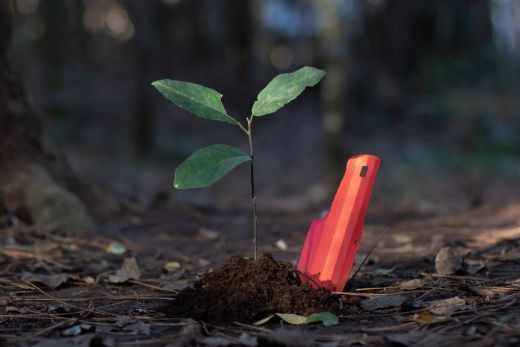Racoons do it. Bears do it. Even Moose do it – and they’re a lot bigger than us. So what’s so wrong with a human taking a poop in the woods and leaving it to nature’s processes? Quite a lot actually. People tend to stray only a short distance from a trail or campground to pop a squat, and, as a result, human waste tends to concentrate in certain areas. When nature calls, you may going looking for some privacy and, finding a hidden recess, think you’ve found the one spot no one else will chance upon, until you see the piece of toilet paper sticking out from under a rock less than a foot away, and then another little cairn and another, each with the telltale sign of a enthusiastic wiper.
Such an experience can easily spoil your experience of an otherwise pristine wilderness, and worse yet, improperly disposed human waste can contaminate water sources and pose a real risk to the health of those nearby. To keep our natural areas from becoming biohazard minefields, it’s important for everyone to deal with their poop properly. In this very practical guide, I explain what that entails and even include some tips that can make it easier to answer nature’s call.
Regulations regarding the disposal of human waste
Some high-elevation, environmentally sensitive and heavily used areas are subject to regulations that require people to pack out solid human waste. Always find out in advance if there are regulations so that you can arrive prepared. Even if there are no rules in place, it’s still best practice to follow leave-no-trace principles and aim to leave the area as clean as you found it. To do that, you can resort to one of two options depending on regulations. The first is viable only where there are no regulations in place. The second will be your only option in areas where you’re required to pack out your poop.
Option 1: Dig a cat hole
If there are no regulations stipulating the removal of human waste, your easiest option is to dig a cat hole and bury your poop. Since it’s becoming less and less common for land managers to allow the burying of toilet paper, you should be prepared to pack it out. Actually, even if it's not required,it’s best to pack out your TP.
1. Find a suitable location
Find a suitable location at least 60 meters (200 feet or roughly 80 steps) from any water, campsites, and trails. If possible, choose a spot with loam soil and plenty of sunlight. Both sun and organic soil will aid decomposition. If you’re camping in the area for more than one night or are with a large group, your cat hole sites should be widely dispersed. If the ground is hard, as it often is in rocky deserts, try lifting out a partially buried rock and use the hole it filled.
2. Dig a hole
Using a lightweight camping trowel (TheTentLab Deuce #2 weighs only 17 g or 0.6 oz), dig a hole at least 15 centimeters (6 in) in diameter and a minimum of 15 centimeters deep. Most trowels have a ruler to help with this. In hot deserts, human waste does not biodegrade easily since there’s little organic soil to help break it down. In these environments, your cat hole should be only 10 centimeters (4 in) deep. A shallower hole will allow the sun to speed up decomposition.
Pooping in the morning is no fun. It is usually cold and dark, and you’re usually in a rush to break camp and get out on the trail. Instead of frantically digging a cat hole in the wee hours of the morning while doing your utmost to hold it in, dig your morning cat hole the night before. That way, you can casually saunter up to your hole, drop a squat, and fill it with a satisfying and unrushed dookie.
3. Make your deposit
If you aren’t going to pack out your toilet paper, you should bury it first. This means you’ll need to poop next to the cat hole, not in it. After wiping, put your used toilet paper in the hole and shovel your poop in afterwards. It’s best to use a stick and not your trowel for this. Make sure that you have a suitable stick on hand before you do your business. If you’re packing out your toilet paper, you can make your deposit straight into the hole – another reason to pack out your used TP.
4. Pack away your used toilet paper
Regardless of the regulations, it’s best to pack out your used toilet paper. The norm is to use a ziplock bag, but many aren’t comfortable carrying a clear bag that says “I just wiped my ass with this”. You can disguise the contents by lining the bag with aluminum foil, covering it with duct tape, or drawing permanent marker designs on it. But there is another, more convenient strategy. Put your used toilet paper or wipes into the ziplock bag, and then put this with your TP roll (or wipes) and a small bottle of hand sanitiser into a small (1 L) dry bag.

The benefits of this system are threefold: it essentially double-bags your used toilet paper (safer); it keeps all your backcountry toilet necessities together (minus your trowel, which will have to be carried separately); and it makes it less obvious to the casual onlooker why you’re walking off into the woods. Tip: you never need more than a quarter of a roll of TP. At home, put aside a few rolls of your favourite double-ply when they get to this level, and you’ll have a roll of the right size ready to go when you head off on your next adventure.
5. Fill the hole and cover your tracks
With your business concluded, you can now fill the hole with the soil you excavated. If you can find a rock, put it on the spot to discourage someone else from digging there. If there are no rocks lying around, use a small stick planted vertically – the universal backcountry sign for “don’t dig here”. Lastly, scatter leaves and other natural material over the area. That way, your warning sign gets its message across without detracting from the natural aesthetics of the area. If you have left a hole in the ground where you removed a rock, also make this less obvious.
6. Wash your hands
Soap is not very practical unless you have enough water and the means to pour it into your hands. It’s best to have a small bottle of hand sanitiser on upi. If you keep your TP in a small dry bag, you can put your hand sanitiser into the same bag.
Option 2: Pack it out
When packing out solid waste you have a few options but pack-it-out bag systems generally involve an inner bag you poop directly into and another sturdier, sealable outer bag to make things safer during transport. You may have heard the term ‘WAG (Waste Alleviation and Gelling) bag’ used to refer to any double-bag system for packing out human waste, but this label can be confusing since it is also the name of the original product. For the sake of clarity, I will refer to pack-it-out bags filled with gelling powder as waste gelling bags. Sometimes, they are also called “blue bags”.

What is a waste gelling bag?
Cleanwaste, the company that made the original WAG Bag, has since renamed its product the GO Anywhere Toilet Kit. Like the two other commonly available waste gelling bags – the Biffy Bag and RESTOP 2 – the GO Anywhere Toilet Kit includes a biodegradable waste bag loaded with Poo Powder, an outer transport bag, toilet paper, a sanitary wipe, and hand sanitizer. The Poo Powder and its equivalents turns waste into a gel, neutralising odour and making disposal safer and easier.
How to use a waste gelling bag
Using a WAG bag is similar to using a cat hole, but instead of digging and pooping into a cat hole, you hold the liner of the waste bag around your rear end, make your deposit straight into the bag (Have the hand sanitizer and toilet paper within reach). When you’re done, you cinch the top of the waste bag closed, tie it off, and then zip the outer bag closed, sealing in odour and ensuring an extra layer of safety.
How to carry and dispose of your waste bag
Once you’ve captured your poop and sealed the bag (make sure there aren’t any openings or leaks), it’s best to store your waste bag in at the bottom of your backpack but away from food. Storing it at the bottom means you won’t have to unpack and repack it throughout your trip. On returning to the trailhead, you should dispose of your waste gelling bag into a regular trash can or container intended for the disposal of human waste if there is one (regulations can vary from area to area so check these first).
Option 3: Porta-loo it
If you're car camping and are able to carry larger gear, a bucket fitted with a lid and toilet seat (like that made by Reliance) makes for an inexpensive portable solid-waste toilet – just the solution if you’re going to be using primitive campsites. It might not be as dignified as the ceramic throne you have at home, but your plastic porta-loo will be significantly more comfortable than squatting. Products like the Reliance Luggable Loo are compatible with large waste gelling bags, which can take a few ‘deposits’ before they have to be sealed.

Toilet paper or wet wipes
Up until now, I’ve only mentioned toilet paper as a wiping medium, but there are alternatives. If you’re not prepared to go full commando with leaves and rocks, this will most likely be a pack of wet wipes. Wipes do a better job of keeping your derriere clean even when you aren’t camping, but they really prove their worth when you don’t have the option of a shower every day and are getting even dirtier on top of that. They can also do double duty as disposable wet towels if you feel the need to wipe down at the end of a particularly sweaty day.
There was a time when all wet wipes were non-biodegradable, but today you can choose from several 100% biodegradable options that will help keep you cleanish while reducing your contribution to landfills. Combat Wipes and Sea-to-Summit Wilderness Wipes are particularly popular with outdoorsy folk. The only downside to wipes is the weight (around 90 grams or 3 ounces for twelve), but I’m unlikely to carry more than half that. And I consider 45 grams (1.5 oz) an acceptable price for being a little cleaner.
Pick a position
If you don’t have the luxury of a porta-loo, you will have to squat over your cat hole or waste bag. Here are some common strategies for easing the weight on your haunches:
The Standard Squat
Place your feet apart for balance (as wide as your pants will allow), stick your bottom out as you squat low, and use a hand to pull your pants forward and keep them out of the line of fire. Afterwards it’s best to scoot forward a little, before trying to stand up.
The Tripod
Find a tree with a fairly thin but sturdy trunk. Grip it tightly and lean back into a squat. Your feet should be near the base of the tree. If you are using a cat hole, make sure you identify the right location before you excavate.
The Assist
By using a fallen log or conveniently shaped rock, you take much of your weight off your legs, much like you would on a regular toilet. Simply scoot back over the object, and hang your rear off it as far as you can without falling over.
With more and more people getting outdoors, the potential for human impact on our wilderness areas increases too. Litter, trail erosion and water contamination are just a few of the consequences of unchecked human activity, and as the number of trail users grows, it becomes more important for everyone to do their bit to protect our natural spaces. Disposing of human waste and toilet paper is just one of the ways you can limit your impact on these areas. To learn more about the Leave No Trace principles and how they can be applied in practice when out on the trail, see my article on LNT.
